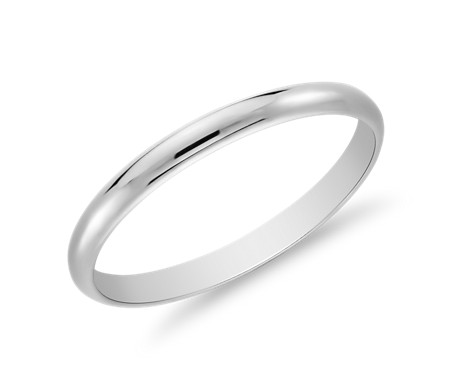The Reason for the Ring
 Before presenting it to his bride, the groom shows the ring to witnesses who ascertain that it has the minimum worth prescribed. The Mesader Kiddushin verifies that the groom actually owns the ring and asks the witnesses if it is worth at least a pruta.
Before presenting it to his bride, the groom shows the ring to witnesses who ascertain that it has the minimum worth prescribed. The Mesader Kiddushin verifies that the groom actually owns the ring and asks the witnesses if it is worth at least a pruta. In order to be sure that the bride would not mistake the value of the ring, it is not set with stones. Some people even eschew any design or words etched into the ring, lest the bride mistake its value.
 While gold is favored by many, there is no halachic stipulation about it. If they would like to use a band of silver, titanium or some other metal, that's fine because it would still meet the requirement of monetary worth. However, it cannot be gold or silver-plated because it would take on the appearance of more precious metal than it is, in fact, made of.
While gold is favored by many, there is no halachic stipulation about it. If they would like to use a band of silver, titanium or some other metal, that's fine because it would still meet the requirement of monetary worth. However, it cannot be gold or silver-plated because it would take on the appearance of more precious metal than it is, in fact, made of.The groom recites, "harei at mekudeshes li betabaas zu keda'at Moshe veYisrael:" [You are married to me with this ring in accordance with the law of Moses and Israel.] He then places the ring on the bride's finger. Traditionally, the ring is placed on the right index finger.
The ring will usually not fit past the knuckle on the index finger because wedding bands are typically sized for the left ring finger on which they are worn after the ceremony. Why then do we put it on the right pointer? The reason is not clear, though it seems that it may have been the finger favored for rings back when the custom was set. If the bride is wearing gloves, she would either have to remove the glove or cut off the part that covers the finger on which she is to receive the ring. Presenting a ring to the groom is not part of the Jewish wedding ceremony, so traditional rabbinic authorities do not allow an exchange of rings at the point of kiddushin.
In Made in Heaven: A Jewish Wedding Guide, (Moznaim Publishing, 1983 pp. 49-50), Rabbi Aryeh Kaplan cites a number of reason based on traditional sources. A ring is preferred because it is something that can be worn by the bride as a constant reminder of her wedding. In Jewish practice, tying tefillin daily is also a constant reminder of our bond with G-d, which is likened to a marriage. When the tefillin are donned, the strap on the left arm is wound around the middle finger three times while the verses recited refer to G-d declaration of “v’erastich” [I will betroth you to Me, an affirmation of the mutual connection between G-d and His people.
The circular shape of the ring symbolizes the circle of the life cycle. Marriage is a high note in everyone’s life; it is anticipated almost from birth. When a baby is named, it receives the blessing to grow to Torah, chuppah, and good deeds. Some sources observe that the shape of the ring is the same as “a link from a chain.” Not only are the bride and groom linked to each other but to the succession of generations all the way back to the first couple. By creating the bond between husband and wife, they are also forging a link to the past, as well as to the future.
Related:
Comments